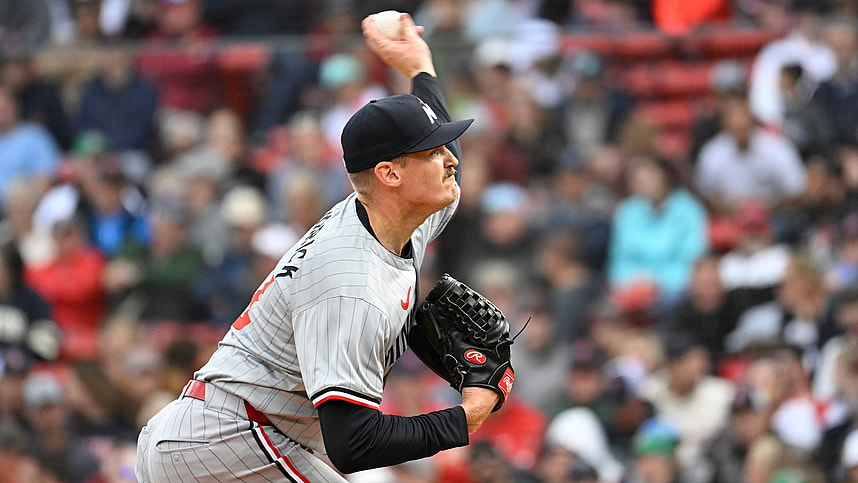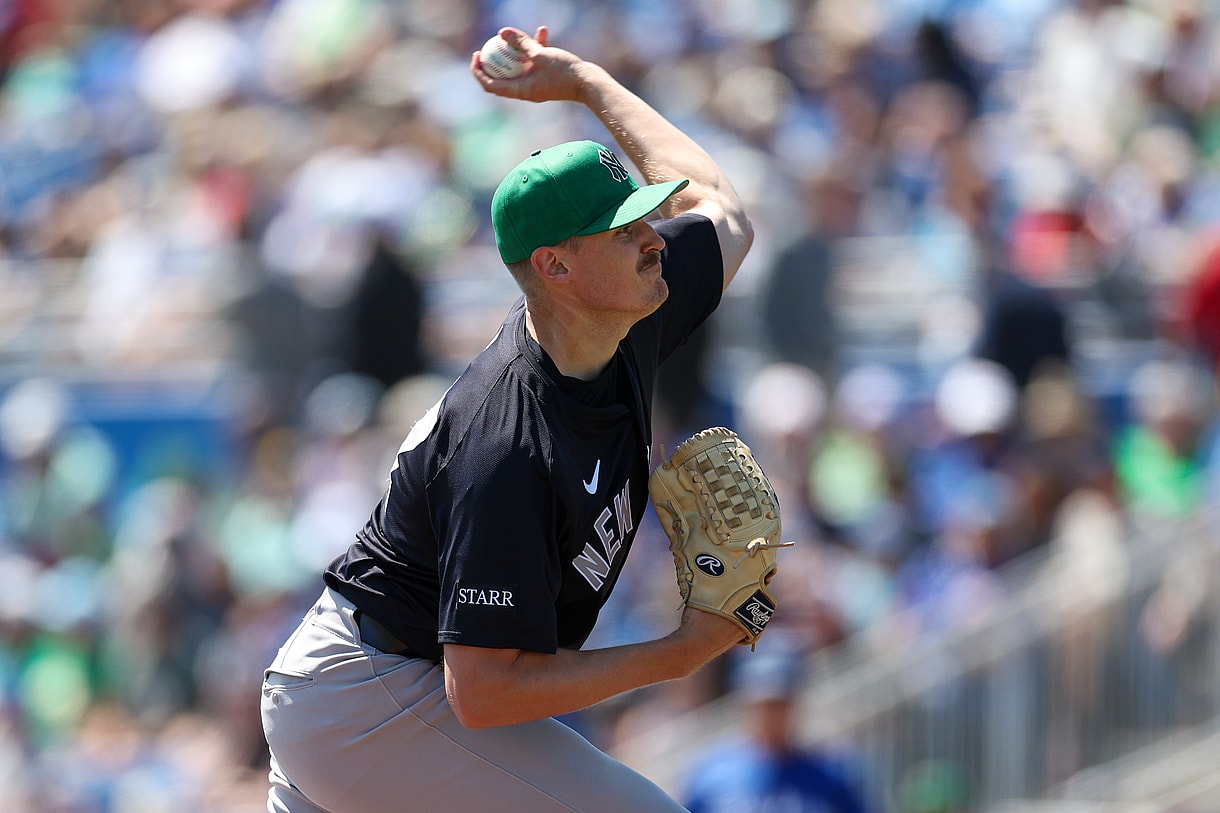
The Yankees‘ rotation has been bad to start the year, they’re bottom 10 in both ERA and K-BB%, an alarming sign because it matches what the projections said they would be. What has made this team uniquely odd is that to this point they’re exactly what they’re branded to be; lots of home runs, bad starting pitching, and a bullpen that can be brilliant once it gets healthy. One of the best ways to get out of a tough jam with a rotation is to take some high-upside risks, something that has gotten them out of tough spots during the season.
Shifting Nestor Cortes to the starting five gave the 2021 team some much-needed helium in a rotation that had to rely on Andrew Heaney for much of the summer that season. Michael King became a true frontline starter after spending two seasons as a high-leverage reliever, and Clarke Schmidt’s clunky 2023 season led to a much more promising 2024 campaign. Their Rookie of the Year winner was optioned within a week of Spring Training games last year; when they take risks, good things have happened in that rotation, and perhaps Brent Headrick represents a chance to take a chance.
A starter with the Twins’ organization who completed five innings in a start as recently as last season, the Yankees could use his demotion to Scranton as a chance to build his innings up as a starting pitcher. His stuff looked the part, and he could be the kind of pitcher that the Yankees can seamlessly deploy in their rotation if he hones a pitch they’ve helped him completely revamp.
Brent Headrick’s Stuff Gains Could Help Damaged Yankees’ Rotation

The lack of pro innings that Brent Headrick had shouldn’t be discounted here, as, similar to the likes of Ben Rice and Clarke Schmidt, injuries and COVID-19 affected his development. He had 184 innings of MiLB work under his belt before making his MLB debut on April 19th, 2023 which is less than half of what Michael King had (387.0 IP) and even fewer than Will Warren (353.2 IP) when they made their debuts. In fact, Headrick still hasn’t crossed the 350-inning threshold between his time in the big leagues and Minor Leagues combined.
With the Yankees, he’s raised his arm angle and has thrown harder fastballs with more vertical ride than ever before, this isn’t an improvement based on the fact that he’s in the bullpen now. As a reliever down the stretch last year, Brent Headrick was sitting 91.2 MPH with 17.1″ of IVB on his fastball from a 36-degree arm angle, whereas in his four outings, his fastball has been at 92.8 MPH while averaging 19.6″ of IVB while throwing from a 45-degree arm angle.
Movement cannot be evaluated without looking at it relative to a pitcher’s release point, as a higher release point fastball with 16″ IVB is less effective than one with the same vertical movement but from a lower release height.

The four-seam fastball that Brent Headrick threw in 2024 had league-average vertical movement from his arm slot, but with more backspin, the increased arm slot becomes worth it because it rides more than the average fastball thrown that high off the ground. As a result, his four-seamer has increased by 8 points from last season, and it has been a pitch he’s relied on over 70% of the time to this point. If the Yankees try to build up his pitch count in Scranton, there’s a chance that he will see his fastball velocity hold and that it remains a firmly above-average pitch for him.
At 93 MPH it isn’t overpowering, but with his 7 feet of extension, the perceived velocity of his heater is closer to 94 MPH, which at nearly 20 inches of IVB is difficult to hit. Brent Headrick’s secondaries have also seen improvements, with his slider adding some more depth and lateral movement while his splitter added 7 inches of drop. An immediate concern I have is that he’s a three-pitch pitcher and I like more pitch diversity with my reliever-turned-starter projects, but there are ways to work around that.
He has a fastball that plays to both righties and lefties and a secondary that can play to both sides of the plate, that might be enough to get whiffs through ~5 innings of work. He’s thrown 100 innings in back-to-back seasons from 2022-2023, there’s real reason to believe that he can handle the workload of a starter given again how aggressive they’ve been with pitcher build-ups when the rotation has become depleted.
READ MORE: Yankees face an easy decision demoting veteran pitcher
His 6’6 frame and excellent pitch shapes are easy to dream on from the left-handed side, and the Yankees could do even more tinkering with the left-hander. Maybe they have him add something like a cutter or bring his sinker back after ditching it early into his Minor League career. Either pitch would give him a really well-rounded repertoire to go with a trio of pitches that grade out as above average according to Stuff+.
The Yankees cannot afford to keep starting Carlos Carrasco, and their patience with Marcus Stroman will be truly tested during the season. If Will Warren doesn’t work out, having someone in the wings who could take a third spot in the rotation even after Clarke Schmidt and Luis Gil return could be valuable. If they lost a starter today, Brent Headrick would be one of their few MLB-ready arms in Triple-A with experience in a rotation, and he could become the Yankees’ next successful project if given the chance.
It’s important to target upside at positions that lack certainty or consistency, especially for a Yankees team with so much young talent. It’s working too; pitchers age 27 or younger have a combined 2.61 ERA and hitters a combined 132 wRC+ for the Bronx Bombers this season. Last year even if you filter out Juan Soto, they had two of the three AL Rookie of the Year finalists including the winner Luis Gil. The Yankees can create pitching out of thin air, and with three recent successes converting relievers back into starters since 2021, perhaps they find their fourth in 2025 with Brent Headrick.
More about: New York Yankees